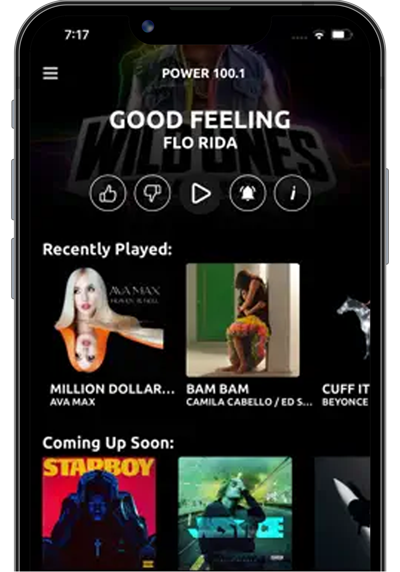There never were any bad contracts in the NBA. Players got paid, and they probably deserve more than the 50% of basketball-related income they have negotiated from the league's governors. Remember that.
There were ill-advised contracts, at least from a team-building perspective, though there are less of them now. Even Bradley Beal's five-year, $251 million contract — complete with a no-trade clause — changed hands. Front offices are pretty smart these days, and the ones that are not get exposed pretty quickly.
Measure these deals not on dollar amount alone. Players should be paid whatever they can negotiate, then some. Measure them instead on this question: Is this deal one a championship team would make?
Remember this, too: Basketball is a sport. Sports are fun. Even the worst contracts are good contracts.
But ...
THE 2024 OFFSEASON'S 7 WORST CONTRACTS
1. James Harden, Los Angeles Clippers ($35M AAV)
Contract: 2 years, $70 million
Percentage of the 2024-25 salary cap: 23.9%
2023-24 (72 games): 16.6 PTS (43/38/88), 8.5 AST, 5.1 REB, 34.3 MIN
Advanced: 18.6 PER, 61.2 TS%, .163 WS/48, 4.1 BPM, 3.8 VORP
Cost Per Win: $4,166,666.67
In October 2021, Harden declined a three-year, $161 million extension from the Brooklyn Nets, which would have paid him in excess of $55 million this coming season. He hoped to secure a four-year, $227 million deal in June 2022 that would have made him the NBA's first $60 million man. It never came.
Harden cost himself $62 million over the past three seasons, and for what? Three more disappointing playoff exits. He played a role in each. Consider the $36.4 million he is now owed in 2025-26 restitution for lost wages. Good for him for earning some of it back. But I am not sure how it benefits the Clippers.
Harden's averages since the 2019-20 season, when at the age of 30 he won a third consecutive scoring title (34.3 points per game) and finished top-three in the league's MVP voting for a fourth straight year:
2019-20 (68 games): 34.3 PTS (44/36/87), 7.5 AST, 6.6 REB, 2.7 STL/BLK
2020-21 (44 games): 24.6 PTS (47/36/86), 10.8 AST, 7.9 REB, 2.0 STL/BLK
2021-22 (65 games): 22.0 PTS (41/33/88), 10.3 AST, 7.7 REB, 1.9 STL/BLK
2022-23 (58 games): 21.0 PTS (44/39/87), 10.7 AST, 6.1 REB, 1.7 STL/BLK
2023-24 (72 games): 16.6 PTS (43/38/88), 8.5 AST, 5.1 REB, 1.9 STL/BLK
It is a steep decline, even if he remains one of the league's premier passers. Whereas once Harden was generating 6.3 at-rim field-goal attempts and 11.8 free-throw attempts per game, he is now attempting two shots per game in the restricted area and 4.8 free throws a night. He was worse in the postseason.
Harden was never a great defender. The Clippers allowed 115.2 points per 100 possessions — equivalent to last season's 20th-rated defense — when he was on the floor. And he turns 35 years old next month.
I do not know how else to say this: Harden is far from the perennial MVP candidate he once was. He has not made an All-Star team since 2022, when he could not participate due to a hamstring injury that he conceded was the result of arriving to training camp out of shape. He is on his fourth team in four years. This is not going to get better, not with 43,215 career regular-season and playoff minutes on his legs.
When Harden was available via trade last season, nobody but the Clippers made a serious offer, and this is what makes this deal so bad. They traded the rights to three first-round draft picks in order to secure Harden, knowing they were going to give him this contract, despite not competing against anyone serious — then or now — for his services. Nobody else was paying Harden $35 million to play this season.
So, what did the ultra-rich Clippers do? They cried poor, citing the collective bargaining agreement for reasons why they could not possibly re-sign Paul George. You know what they could have done instead? Paid the superior player (currently), kept three first-round picks and never tested the waters on Harden.
Either way, the Clippers are no longer a title contender. For that they get to pay Harden $70 million.
2. Immanuel Quickley, Toronto Raptors ($35M AAV)
Contract: 5 years, $175 million
Percentage of the 2024-25 salary cap: 24.9%
2023-24 (68 games): 17 PTS (43/40/85), 4.9 AST, 3.8 REB, 29.2 MIN
Advanced: 16.7 PER, 57.7 TS%, .115 WS/48, 1.3 BPM, 1.7 VORP
Cost Per Win: $7,446,808.51
Quickley is good. He finished runner-up in the 2022-23 Sixth Man of the Year race for the New York Knicks and transitioned into a starting role once he was traded this past season to Toronto, where he averaged 18.6 points (on 42/40/84 shooting splits), 6.8 assists and 4.8 rebounds in 38 appearances.
An average annual value of $35 million does not seem so bad on the surface for a 25-year-old starting point guard who, with some development, could average an efficient 20-5-5 and disrupt on defense. Only, those numbers came on a team that finished 12-26 with Quickley in the lineup. He was a reserve on New York's roster and struggled mightily in a pair of playoff appearances, shooting just 33.3% from the field.
This is the Quickley ideal — energetic playmaking punch off the bench. That earned a 26-year-old Malik Monk, this past year's Sixth Man of the Year runner-up, a four-year, $78 million deal from the Sacramento Kings. Quickley will earn $175 million over five seasons. Their averages per 36 minutes this past season:
Quickley: 21 PTS (43/40/85), 6 AST, 4.7 REB, 1.1 STL/BLK
Monk: 21.3 PTS (44/35/83), 7.1 AST, 4.1 REB, 1.6 STL/BLK
Quickley is now being compensated as a third option, only on a 25-win team that was outscored by 6.1 points per 100 possessions with him on the court. Ask yourself this: What is the ceiling of a roster that counts Quickley as its third-best player? And answer honestly: At best, a play-in tournament challenger.
3. Patrick Williams, Chicago Bulls ($18M AAV)
Contract: 5 years, $90 million
Percentage of the 2024-25 salary cap: 12.8%
2023-24 (43 games): 10 PTS (44/40/79), 3.9 REB, 1.5 AST, 27.3 MIN
Advanced: 11.0 PER, 55.3 TS%, .048 WS/48, -2.3 BPM, -0.1 VORP
Cost Per Win: $15,000,000.00
Williams entered the NBA as a prototypical prospect — a 6-foot-7 forward with a 7-foot wingspan and all the tools to become, at worst, an effective 3-and-D contributor. He turns 23 years old in August. For that, $18 million annually seems like a fair price, especially because two of the three players selected ahead of him in the 2020 NBA draft — Anthony Edwards and LaMelo Ball — are working on maximum contracts.
Except, Edwards and Ball have both shown flashes of brilliance (one more than the other). The third player selected ahead of Williams, James Wiseman, just signed a minimum deal with the Indiana Pacers. He is considered a bust. Williams is paid like a moderate success. Their career averages per 36 minutes:
Williams: 12.6 PTS (57.0 TS%), 5.4 REB, 1.7 AST, 2.1 STL/BLK
Wiseman: 17.3 PTS (59.1 TS%), 10.7 REB, 1.4 AST, 1.7 STL/BLK
The 39-win Bulls were 2.3 points per 100 meaningful possessions better when Williams was on the floor, according to Cleaning the Glass, and the 14-win Detroit Pistons were somehow 8.5 points per 100 non-garbage possessions worse when Wiseman was on the court. Therein lies the difference in their value.
Except, Chicago is operating under the assumption that Williams can still become an effective 3-and-D wing for a playoff team. We have seen little evidence of that. He underwhelmed in his lone playoff series. He missed 65 games of the 2021-22 season to left wrist surgery and suffered a season-ending left foot injury this past season. Maybe with good health he can expand his impressive 41% clip from 3 to more than 2.8 attempts a game. Maybe he can contribute to a top-five defense again, as he did in 2022-23.
Maybe. That is the $90 million bet.
4. Miles Bridges, Charlotte Hornets ($25M AAV)
Contract: 3 years, $75 million
Percentage of the 2024-25 salary cap: 16.5%
2023-24 (69 games): 21 PTS (46/35/83), 7.3 REB, 3.3 AST, 37.4 MIN
Advanced: 15.4 PER, 55.6 TS%, .040 WS/48, -1.1 BPM, 0.6 VORP
Cost Per Win: $11,363,636.36
On the eve of free agency in 2022, Bridges was arrested on domestic violence charges. His wife accused him of fracturing her nose and wrist, tearing muscles in her neck and choking her until she "went to sleep." Bridges later pleaded no contest, avoiding jail time. He remained unsigned for the 2022-23 season.
Two days before free agency in 2023, the Hornets extended a $7.9 million qualifying offer to Bridges, who accepted for the 2023-24 campaign. He arrived to this past season's training camp accused of violating a protective order, though that charge was later dropped, and told reporters, "I feel like if I can get us some more wins, I feel like people's perspective will change a little bit on me." He proceeded to average 21 points on below-average efficiency for a Hornets team that won 21 games — six fewer than in 2022-23.
As a result, the Hornets have now signed Bridges for $75 million two years after they were prepared to offer him nine figures. In some people's eyes, that may be considered a win, at least in a basketball sense.
In my eyes, we have seen two more years of playoff-less basketball in Charlotte and no more proof from Bridges that he meaningfully contributes to winning. The Hornets were worse with Bridges on the floor.
The Clippers and Cavaliers reportedlykicked the tires on Bridges. Either would have required Charlotte's approval of a sign-and-trade. Neither bit. In other words, nobody else was giving Bridges this deal, unless the Hornets facilitated it, and even then I am not sure anyone was paying half as much as Charlotte did.
5. Max Christie, Los Angeles Lakers ($8M AAV)
Contract: 4 years, $32 million
Percentage of the 2024-25 salary cap: 5.1%
2023-24 (67 games): 4.2 PTS (43/36/78), 2.1 REB, 0.9 AST, 14.1 MIN
Advanced: 8.4 PER, 54.4 TS%, .036 WS/48, -3.6 BPM, -0.4 VORP
Cost Per Win: $11,428,571.43
With the 31st pick in the 2022 NBA Draft, the Indiana Pacers selected Andrew Nembhard, signing him to a four-year, $8.6 million contract. He started all 17 games on their run to the Eastern Conference finals this past season — his sophomore campaign — averaging 14.9 points. He will be paid $2 million in 2024-25.
With the 37th pick in the 2022 NBA Draft, the Dallas Mavericks selected Jaden Hardy, signing him to a three-year, $4.8 million contract. He came off the bench in 19 of their 22 playoff games this past season, averaging 4.2 points in just 6.8 minutes en route to the NBA Finals. He will be paid $2 million in 2024-25.
In between, the Lakers selected Christie, signing him to a two-year, $2.7 million contract. He did not crack the Lakers' playoff rotation this past season, when he illustrated little developmental progress, so they handed him a four-year, $32 million contract as soon as free agency opened. Make any of it make sense.
If the Lakers do not mind their smaller deals, what hope do they have in negotiating the bigger ones? Pretty soon they'll be giving $100 million to a 40-year-old. And if I am LeBron James, I would wonder why I have to give up money to get the Lakers under the second apron, only for them to pay Max Christie.
6. Tobias Harris, Detroit Pistons ($26M AAV)
Contract: 2 years, $52 million
Percentage of the 2024-25 salary cap: 18%
2023-24 (70 games): 17.2 PTS (49/35/88), 6.5 REB, 3.1 AST, 33.8 MIN
Advanced: 16.5 PER, 57.6 TS%, .121 WS/48, 0.9 BPM, 1.7 VORP
Cost Per Win: $4,406,779.66
Did the Pistons watch Harris on the 76ers? I am not sure his approval rating in Philadelphia ever rose above a few percent over the life of a five-year, $180 million contract. (You know, the one they essentially gave to him instead of Jimmy Butler.) Sixers fans might have paid $52 million for Harris to play in Detroit.
Harris is good. He can score 20 points on any given night, though his career average of 16.3 per game on below-average efficiency is closer to what you will get on most, and he has repeatedly disappeared in big games. He has been a tertiary option on teams that have repeatedly lost in the conference semifinals.
Harris is also, by all accounts, a good dude. He will be a quality veteran presence in a young locker room. There is value in that. Is it worth $26 million annually? I think that is what the mid-level exception is for.
Instead, Harris is being paid to be a secondary option on a team that has not won 24 games in a season this decade. Way to go, Pistons? They have to pay someone. May as well be Harris until they get serious.
7. OG Anunoby, New York Knicks ($42.5M AAV)
Contract: 5 years, $213 million
Percentage of the 2024-25 salary cap: 26.1%
2023-24 (50 games): 14.7 PTS (49/38/75), 4.2 REB, 2.1 AST, 34.0 MIN
Advanced: 12.8 PER, 59.5 TS%, .073 WS/48, -0.6 BPM, 0.6 VORP
Cost Per Win: $16,346,153.85
Anunoby's midseason arrival transformed the Knicks into a juggernaut. They outscored opponents by 23.9 points per 100 meaningful possessions when he was on the floor this past season, an on/off rating unmatched by anyone in the league. The Knicks have every reason to believe they would have reached the Eastern Conference finals and given the eventual champion Boston Celtics their toughest playoff test, if only Anunoby were healthy. His defensive impact transcends an efficient 14.7 points per game.
The Knicks could not afford to lose him. Not after trading Quickley and RJ Barrett to get him. And not after trading the rights to seven first-round draft picks to the Brooklyn Nets for Mikal Bridges. The two of them should pose a formidable defensive challenge for Boston's Jayson Tatum and Jaylen Brown.
I guess that makes him worth the league's 18th-largest financial commitment ($212.5 million), squarely between Philadelphia 76ers teammates Joel Embiid and Paul George. Speaking of which: Among those three, whom do you think has played the fewest number of games over the past four years? Anunoby.
You make long-term commitments to injury-plagued stars because of their promise when healthy. Anunoby is no star. He is a third option on a championship contender — and maybe a fourth option on a serious one. So you get queasy about the financial squeeze that will come once Jalen Brunson and Mikal Bridges are also due extensions in 2026 and whether that trio will ever be enough, health concerns aside.
I would like more than a 23-game sample size of what is possible when Anunoby is on these Knicks. I would like to know if his regular-season on/off brilliance translates to a higher playoff level, in a way he never really showed in Toronto. I get why the Knicks paid him. They had to. It still makes me nervous.





